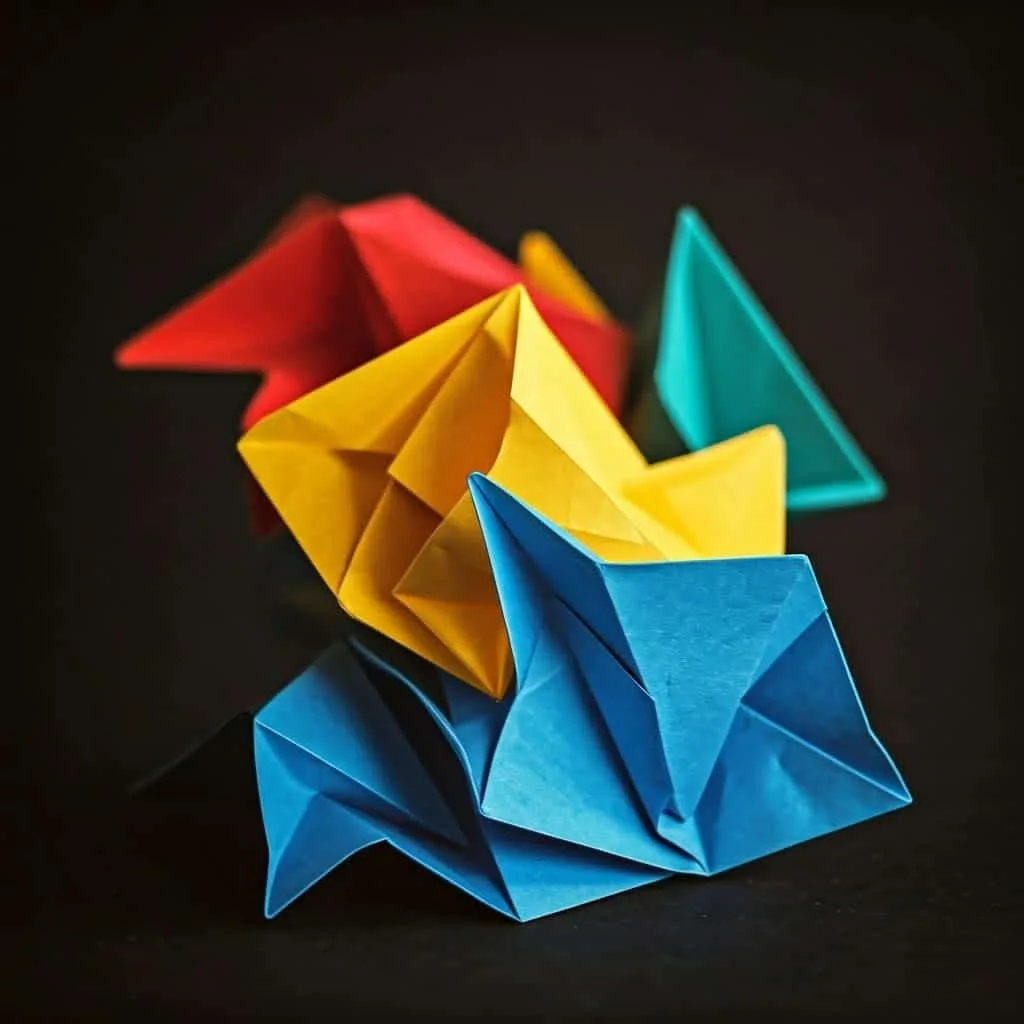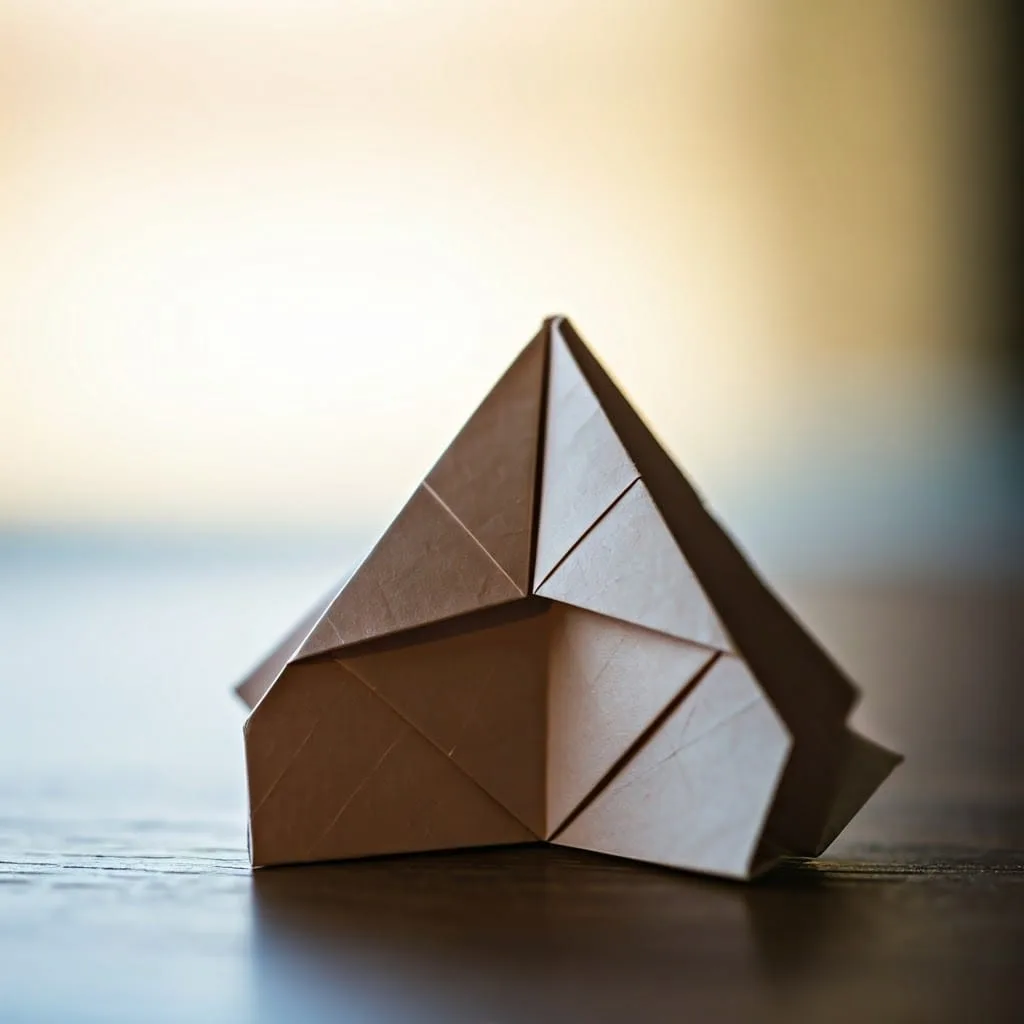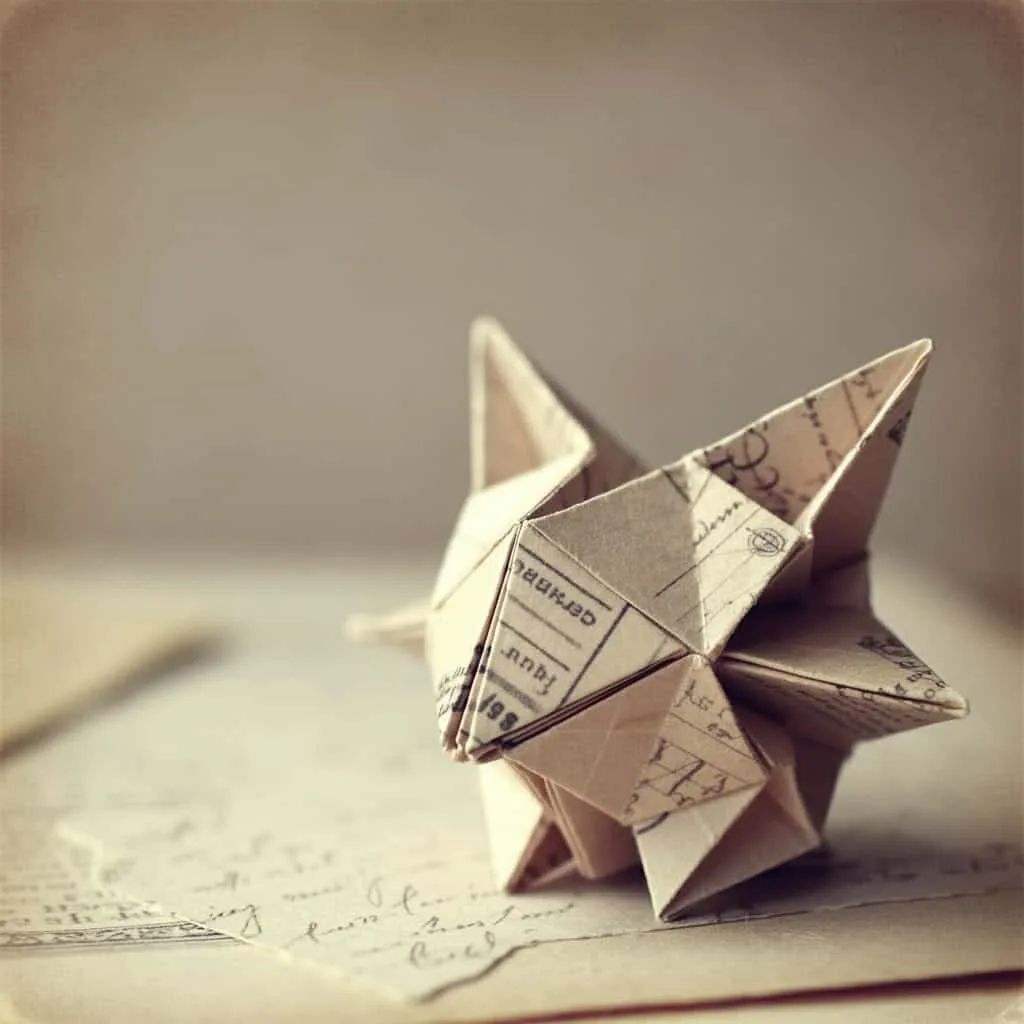Your cart is currently empty!
Stay in Touch!
Get updates about new artwork and upcoming events.
Get updates about new artwork and upcoming events.
—
by
Abstract art, while often seen as non-representational and purely aesthetic, has a remarkable ability to convey complex narratives. Through its use of shapes, colors, and composition, abstract art communicates in a language beyond words, evoking emotions and inviting personal interpretation. Despite its lack of recognizable figures or objects, abstract art can tell stories as rich and detailed as traditional forms of storytelling. In this blog, we’ll explore the different ways abstract art achieves this, focusing on its emotional impact, personal interpretation, compositional techniques, and the storytelling inherent in the artistic process.
As an origami mixed media artist, I integrate these storytelling techniques into my own practice. My art combines the precision of geometric puzzles with abstract expression, using folded paper to create sculptures that narrate personal experiences of resilience, transformation, and the complexities of the human condition. In this post, I’ll share how abstract art can convey deep stories, drawing parallels to my own work.
Abstract art’s storytelling power begins with its ability to evoke emotions. By carefully selecting colors, shapes, and textures, artists can craft a visual language that taps into universal emotional experiences. These choices guide how a viewer feels when they interact with the artwork.
Color plays a pivotal role in abstract art, influencing mood and emotional response. This idea is grounded in color psychology, which studies how different hues affect human perception and behavior. In abstract art:

For instance, in my artwork The Fading Princess, I use a gradient of burgundy and light pink against varying shades of gray to represent the fading of childhood innocence. The soft, warm hues create a sense of nostalgia and tenderness, while the muted grays introduce an element of introspection and loss. This combination of colors serves to convey a story about transition and the passage of time, evoking emotional responses tied to memory and growth.
Shapes and forms in abstract art also contribute to its emotional resonance. Each form can carry inherent symbolic meanings:
In my origami sculptures, I often use repeated modular patterns composed of sharp, geometric folds. These angular forms, while visually precise, symbolize the challenges we face in life—obstacles that, when overcome, create beauty and structure. The repetition of these forms can also represent resilience, as each fold contributes to the integrity and harmony of the overall piece.
One of abstract art’s most powerful characteristics is its openness to interpretation. Unlike representational art, which depicts recognizable scenes or objects, abstract art allows viewers to project their own experiences, emotions, and thoughts onto the work. This capacity for personal interpretation transforms the viewer into an active participant in the storytelling process.
In abstract art, ambiguity is not a limitation but a strength. The absence of clear, recognizable subjects forces the viewer to engage with the artwork on a more personal level. This ambiguity encourages viewers to ask themselves questions like, “What does this remind me of?” or “How do these colors and shapes make me feel?” Each viewer may interpret the same piece in vastly different ways, depending on their own emotions, memories, and personal experiences.
In my art, I intentionally leave space for this type of viewer engagement. The sharp, repeated folds in my origami sculptures may suggest strength and order to some, while others might interpret the same shapes as signifying confinement or rigidity. By allowing for multiple interpretations, I create a dynamic, evolving narrative that shifts depending on who is viewing the work.

Abstract artists often employ symbolism and metaphor to infuse their work with deeper meaning. These symbols may not be immediately recognizable, but they add layers to the narrative that can be uncovered through closer examination. For instance, geometric patterns may represent order in the chaos of life, while contrasting textures can signify the balance between strength and fragility.
In my work, the use of modular origami patterns often serves as a metaphor for the balance between order and chaos. The precise, mathematical folds required to create the modular forms reflect life’s complexities, where precision and unpredictability coexist. This symbolism allows viewers to interpret the artwork as a reflection of their own experiences—whether they see the folded structures as a metaphor for resilience, transformation, or the delicate balance of life’s challenges.
Abstract art can also tell a story through its composition and the way visual elements are arranged. Just as a writer leads readers through a narrative with a structured plot, an abstract artist can guide the viewer’s eye across the canvas or sculpture, creating a visual journey.
The composition of an abstract piece refers to the arrangement of its visual elements—shapes, colors, and lines—on the canvas or in the sculpture. A strong composition can create a sense of movement, guiding the viewer’s eye through the artwork in a deliberate way. In this sense, the artwork acts as a visual map, with each element contributing to the flow of the narrative.
In my origami-based sculptures, the intricate folds and repeated patterns create a natural rhythm that guides the viewer’s gaze. The sharp angles and precise lines of the folded paper draw the eye from one point of tension to the next, leading the viewer on a journey through the artwork. This sense of movement mirrors the progression of a story, where each fold represents a moment of conflict or resolution, contributing to the overall narrative arc.
Contrast and balance are essential tools in abstract art, allowing artists to create focal points and areas of tension or harmony. Contrast refers to the juxtaposition of different visual elements—such as light and dark colors, smooth and rough textures, or curved and angular shapes—while balance ensures that these elements are arranged in a way that feels cohesive and resolved.
In my work, I often use contrasting textures—smooth painted paper against rough, natural wood panels—to create a visual tension between the organic and the man-made. This contrast serves as a metaphor for the inner and outer worlds we navigate as individuals—the polished exterior we present to others versus the raw, vulnerable interior that we often keep hidden. The balance between these contrasting elements creates a story of reconciliation, as the different textures and forms come together to create a unified whole.

The process of creating abstract art can be just as important to the story as the final piece itself. Abstract art often reveals traces of its creation—visible brushstrokes, layered textures, or intricate folds—that tell the story of the artist’s journey in bringing the artwork to life.
In many abstract works, the artist’s technique is deliberately visible, adding another layer to the narrative. Brushstrokes, scratches, and textures left on the surface of the canvas or sculpture serve as records of the artist’s physical engagement with the materials. These marks not only tell the story of the artwork’s creation but also invite viewers to consider the time, effort, and emotional investment that went into its making.
In my origami sculptures, the precise folds and intricate modular patterns reveal the labor-intensive nature of the process. Each fold represents a moment of decision, a physical manifestation of the artist’s hand at work. The visible technique—whether it’s the carefully folded paper or the painted surfaces—tells a story of patience, dedication, and craftsmanship.
Many abstract artists build up layers of paint, texture, or materials, creating a sense of depth and complexity within the artwork. These layers can serve as metaphors for the accumulation of experiences or emotions, with each new layer adding to the story. Viewers are invited to “read” these layers, peeling back the surface to discover the hidden history beneath.
In my work, I often layer painted paper on top of wood panels, creating a three-dimensional effect that adds depth to the narrative. The process of layering is akin to the layering of experiences in life—each new fold or layer of paint adds complexity to the whole, creating a story that evolves over time. This sense of depth invites viewers to look beyond the surface and consider the underlying themes of growth, transformation, and resilience.

While abstract art often leaves much open to interpretation, it is also deeply rooted in the personal and cultural context of the artist. Many abstract works draw inspiration from the artist’s surroundings, experiences, or heritage, adding another layer of narrative to the piece.
For many abstract artists, personal experiences serve as the foundation for their work. Whether it’s a specific event, emotion, or memory, these experiences shape the colors, shapes, and compositions the artist chooses.
In my case, my work is influenced by my experiences as a high-functioning special needs child. The themes of resilience, growth, and transformation that define my life are reflected in the intricate folds and precise patterns of my origami sculptures. Each piece tells a story of overcoming challenges, using creativity and precision as tools for navigating the complexities of life.
Abstract art can also incorporate cultural symbols or references, telling stories that resonate with specific communities or traditions. By using colors, shapes, or patterns that hold cultural significance, artists can create works that speak to broader cultural narratives.
Incorporating cultural symbolism into my work adds another dimension to the story it tells. The use of geometric patterns, for example, is often linked to cultural ideas of order, harmony, and balance. These symbols add layers of meaning to the abstract forms, allowing the artwork to tell a story that resonates not only on a personal level but also on a cultural one.
Abstract art is far more than a collection of colors and shapes on a canvas. Through emotional resonance, personal interpretation, visual composition, and the artist’s process, it tells powerful, multi-layered stories. As an origami mixed media artist, I strive to integrate these storytelling elements into my own work, using the precision of geometric puzzles and the emotional depth of abstract expression to create pieces that invite reflection and connection. Whether viewed through the lens of color psychology, symbolic shapes, or cultural references, abstract art challenges us to engage deeply, uncovering stories that resonate with our own experiences and emotions.
By embracing the ambiguity and complexity of abstract art, we can discover new narratives in each piece—stories that speak not only to the artist’s journey but also to our own.